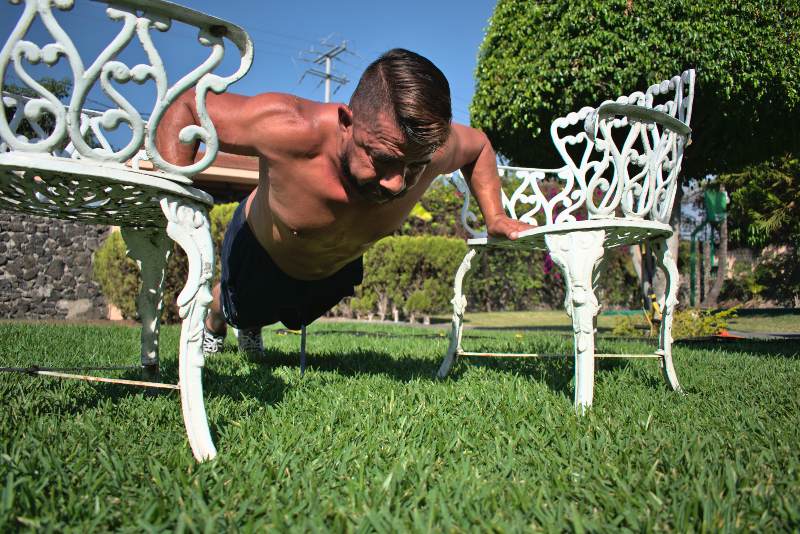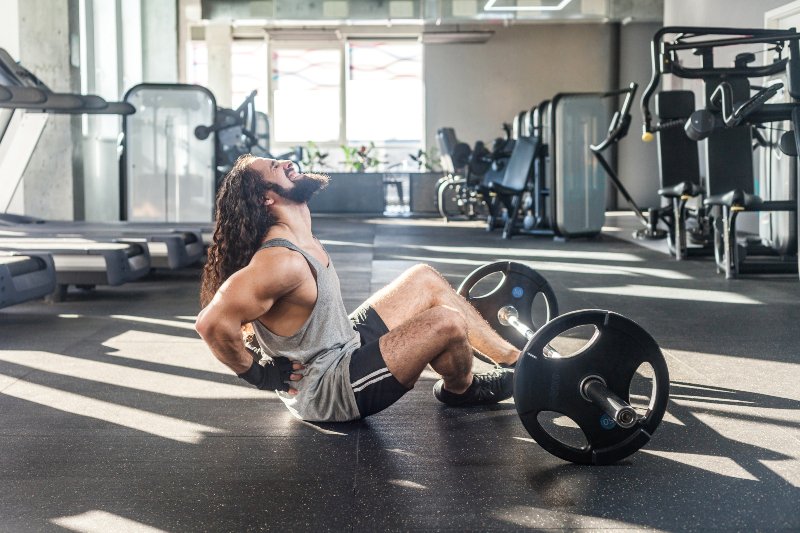Strength training can help you keep a healthy quality of life as you age. Read on to learn how this physical activity can make a significant difference in your well-being.
RELATED: Weight Training For Men Over 50 | What You Need To Know
Health Benefits of Strength Training in Aging Adults
Why Is Strength Training Essential?

Your body changes along with the aging process. For instance, you lose strength and muscle mass. Data show that strength decreases by 10% to 15% each decade until you reach the age of 70.
There are several factors that contribute to this condition. For example, you lose nerve growth factors and androgens as andropause starts to happen around the age of 40.
Additionally, you may experience a sharp rise in the development of chronic diseases. Your joints may become stiff, and your reaction times and reflexes may slow down as well.
However, you may minimize these changes that you might experience with aging. One way is to improve your physical activity, and that involves adding functional strength training to your routine.
Research shows that this type of training can better the strength and muscle mass of the elderly. It can also help address the other issues associated with aging.
What Are the Benefits of Strength Training?
1. Increased Muscle Mass

Whether you're physically active or not, you may lose some muscle mass per decade after the age of 30. You may combat this loss through strength training which can help rebuild your muscle tissue.
2. Recharged Metabolism

Strength training has an impact on your metabolic rate. It improves how your body uses energy during workout sessions and recovery periods.
3. Preserved Bone Density

Muscle loss is related to bone loss. With aging, your bones become weaker. You become prone to bone fractures and osteoporosis.
Thankfully, you can better your bone mineral density and overall bone health through strength training.
4. Enhanced Mental Health

Aging can make you feel depressed, lonely, or isolated. Keep in mind that your mental health is just as essential as your physical health.
Strength training can help improve the psychological changes you're experiencing. It can uplift your mood as well as enhance your self-concept, tranquility, and positive engagement.
5. Improved Functional Movement

A strength training workout is necessary for enhancing your overall function movements. With proper exercise, you can make physical activities easier such as sitting down or getting up from your bed.
Doing strength training can also help you achieve better vigor, boost your balance, and lessen your risk of injury and falls. You might even eliminate the need for devices such as walkers and canes.
6. Reduced Fat

Your body fat increases after you reach the age of 30. Even if there are no changes in your diet, you may still accumulate fat.
Strength training is crucial to help enhance your body composition. As you build muscle mass, you also get to lessen your fat weight.
7. Improved Blood Pressure and Lipoproteins

High blood pressure and undesirable lipid levels can lead to heart disease. Almost 50% of Americans are at risk of this cardiovascular condition.
Studies show that strength training can significantly lessen the resting blood pressure among middle-aged men. Additionally, it can result in increased good cholesterol and decreased bad cholesterol.
RELATED: Why 100 Push Ups A Day Is Not For Everyone
Strength Training Exercises

Remember that each individual is different. Depending on your ability and safety, a program may be modified to make it easier or more challenging.
To boost your stability, you may do the following exercises:
1. Dead Bug
This strength training workout is good for your core.
On your mat, simply lie down on your back. Point your arms upward and lift your legs with your knees bent.
Bring down your left arm and your right leg without touching the floor. Keep your leg straight. Repeat with your left leg and right arm.
2. Hip Bridges

Strength training can also work your hamstrings, hips, and glutes.
Lie down on your mat, keeping your knees bent and your feet planted on the floor. Then, lift your hips as high as you can. Make it more challenging by raising one leg while performing this workout.
3. Wall or Chair Pushups

This movement may depend on your ability level.
For beginner strength training, you may start by doing pushups against a wall. You may also practice it against the back of a low bench. Afterward, you may progress and try to execute a knee or full pushup.
4. Arm Raises and Rows

Functional strength training may target your back, shoulders, and chest, even from a sitting position.
Keep in mind to focus on your form and slowly add weight. Instead of dumbbells, you may use resistance bands as an alternative.
5. Chair Squats
Squatting is a vital functional exercise. It works your important muscles such as quadriceps, glutes, and hip flexors. In addition, it strengthens your hamstrings, calves, abdominal muscles, and lower back.
Remember to do it correctly and with good form. You may perform it with the help of a bench or chair.
6. Biceps Curls and Triceps Extensions

For safety and stability, you may execute these arm exercises from a seated position. You may begin without weights, then slowly advance to lifting light weights.
Additionally, you may target your triceps by doing bench or chair dips. However, be sure that the furniture is strong enough.
Safety Tips for Strength Training Workout

According to the Centers for Disease Control and Prevention, older adults need muscle strengthening and aerobic activities to boost their health. You need to have at least 150 minutes of movement weekly.
However, regardless of the activity, there's always a possibility of injury. Remember that your safety must be your top priority while doing strength training exercises.
1. Assess Your Fitness Level

Determine how much your body can handle. Extra caution may be needed especially for seniors. You may also have little or no experience with strength training.
You might have limitations or medical conditions that you need to consider as well. Evaluate your strength and flexibility to figure out where you can start.
2. Learn Proper Form

Educate yourself on safety measures and correct range of motion. Later on, you should be able to perform strength training exercises even without the guidance of an instructor. Along with these various movements, you should also learn proper breathing techniques.
3. Don't Strain Yourself

As you go along with your strength training routine, aim to target all your muscle groups as much as possible. However, don't forget to listen to your body. You should be able to differentiate good pain from fatigue muscles.
Fight weakness and frailty as you get older. Watch this video by Eldergym Fitness for Seniors to get ideas on strength training program for over 50:
Strength training is necessary for healthy aging. It helps lessen the risk of numerous diseases while improving your overall bodily function.
Apart from strength training, how else can you stay fit and confident during older adulthood? Please share your thoughts with us in the comment section below!
Up Next:
- 5 Battle Rope Exercises Great For Cardio Workout
- How To Build Your Endurance And Stamina
- Testicular Cancer Survivor, Matt Ode, Shares His Story of Hope, Purpose, and “Winning the Day” [PODCAST]
Calling all Health Buffs! If you’ve got the gift of keeping healthy and sharing this knowledge through writing, click here if you want to write for us.
Please stay connected with us on Facebook, Twitter, Instagram, and Pinterest, and make sure to join our community of healthy living and minded people here.
Trending
Tongue Color | 7 Scary Tongue Color Meanings
Lecithin Benefits and Side Effects: 10 Surprising Truths
Get Updates
SIGN UP FOR OUR NEWSLETTER TODAY

10 Erectile Dysfunction Exercises to Keep Your Manhood Healthy


